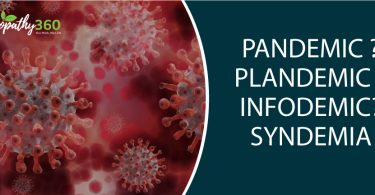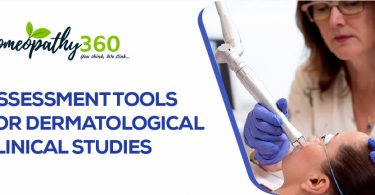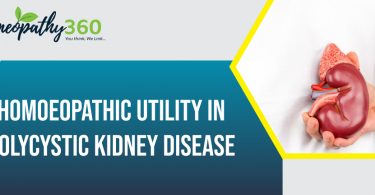Introduction
Sleep disorders affect about 42% of patients who are more than 65 years old. Of these, almost half of the patients face chronic sleep disorder with repercussions on the quality of life, morbidity and mortality, and with an increase in symptoms of depression and anxiety. Moreover, insomnia, the most prevalent disorder, increases the risk of falls and cognitive disorders, independent of psychotropic management. Often underestimated and considered to be a phenomenon associated with age, sleep disorders in this population are most often linked to medical and neuropsychiatric co-morbidities and frequently entail the prescription of hypnotics. A global and specific approach is therefore necessary.
Sleep and ageing
Sleep modification also affects the structure and quality of circadian rhythms. Different studies have demonstrated by objective measurements that with age, there is some decrease in the total time of sleep and its efficacy, with an increase in the fragmentation of sleep by frequent nocturnal awakenings. The duration of slow, deep sleep (stage N3) and REM sleep (Rapid Eye Movement)
One observes the tendency to the advanced sleep phase which is responsible for early awakening. This phenomenon can be linked to a disturbance of the pacemaker of the internal clock (supra-chiasmatic nucleus), or a decrease in the exposure to external synchronisers (reduction in exposure to daylight and diurnal activity). With age, one observes a progressive and continual decrease in the amplitude of melatonin secretion. Nevertheless, after the age of 60 years, sleep disturbances are mostly the prerogative of somatic and psychiatric co-morbidities.
Insomnia in the elderly
Insomnia consists of a subjective complaint of difficulty in falling asleep, in maintaining sleep and in early awakening. Most often, it is a matter of sleep disorders in this population: it could affect between 23 and 34% of patients who are more than 65 years old.
One should distinguish short term insomnia from chronic insomnia. The former arbitrarily lasts less than three months and occurs during the course of a significant life event (bereavement, hospitalisation and institutionalisation).
in chronic insomnia, one could distinguish co-morbid insomnia with a mental or somatic disease affecting almost 83% of the elderly patients presenting with insomnia.
In patients presenting with a somatic disorder, insomnia is generally linked with pain and dyspnoea, and is frequently associated with arthosis, cardiac insufficiency and COPD. Insomnia which is co-morbid with a psychiatric disease is also frequent and principally due to depression which entails significant sleep fragmentation as well as anxiety disorders. Inversely, untreated insomnia is also a risk factor for depression. Elderly population are also exposed to insomnia associated with substance abuse. The regular consumption of alcohol involves 3.3% of persons between the age of 65 to 74 years and up to 20% of patients entering a medico-social establishment. It is also to be noted that several medications can have the effect of altering sleep (sympathomimetic, beta blockers, selective serotonin inhibitors SSRIs, dopaminergic, corticoids and indirectly, diuretics and laxatives).
Respiratory sleep disorders
Sleep disorder consists of sleep apnoea of obstructive or central origin as well as hyperventilation syndrome during sleep.
Obstructive apnoea/ hypopnoea syndrome (OSAHS) is found in 25% of elderly patients. This could probably be due to anatomic and physiological changes and could also be favoured by a significant prescription of benzodiazepines and opiates in the population.
Detection starts with interrogation of the spouse about the presence of snoring or apnoea during sleep. The Stop-Bang questionnaire is used for the detection of OSAHS in this population. A score of 3 to 4 corresponds to an immediate risk of OSAHS and a score of 5 t 8 correspond to a high risk.
The diagnosis is based on a polysomnograph recording and the treatment of Continuous Positive Airway Pressure (CPAP). Care for patient presenting both with OSAHS and a diagnosis for Alzheimer type dementia is possible especially in the early stages and in patients who have the support of the loved one. It is to be noted that OSAHS can also bring about or aggravate pre-existing cognitive disorders. Cognitive improvement through treatment of CPAP could be possible, but the subject remains controversial in literature.
Sleep apnoea syndrome of the central type with or without Cheyne-Strokes breathing is frequently encountered in this population, especially in patients presenting with cardiac insufficiency. Recent evidence shows an absence of efficiency in the treatment of CPAP and the management is based on treatment of the basic disease.
Sleep awakening circadian rhythm disorder
Circadian rhythm disorder of the <<advanced phase>> type is characterised by falling asleep early and awakening early and affects 1% to 7% of the geriatric population. It is a matter of physiological modification. Attempts which aim at re-pushing back the time at which one goes to sleep sometimes entail a decrease in the quality and quantity of sleep, which is responsible for a diurnal somnolence. Treatment is often from a specialist and involves chronotherapy and phototherapy and eventually on melatonin.
Neurodegenerative diseases and sleep disorders
Among patients with light cognitive disorders, 25 to 40% presented with a subjective deep sleep complaint. In these patients, the quality of sleep is altered by several and prolonged awakenings compared to elderly subjects with normal cognition. In case of advanced dementia, specially the degenerative Alzheimer type, sleep could be totally de-structured during the day with complete irregularity of the sleep/ wakefulness circadian rhythms. This disorder of <<irregularity of the wakefulness and sleep>> type is characterised by the absence of a well-marked circadian phase of sleep and wakefulness and could be associated with degeneration of the supra-chaismatic nucleus which is linked to a weakening of the external synchronisers.
In the absence of evidence in literature supporting the prescription of benzodiazepines and non-benzodiazepine hypnotics in patients presenting with moderate to severe dementia, a behavioural approach and the reinforcement of sleep hygiene measures constitute a management priority. Trazadone in small doses could be interesting but there is no definitive evidence in literature.
In case of associated circadian rhythm disorder, treatment is based on institution of hygiene measures, chronotherapy (aimed at progressively advancing the time of going to bed). The efficacy of melatonin is debated but a recent study has shown that phototherapy in the morning, together with the administration of melatonin before the usual time of going to bed, is effective in consolidating the wakefulness/ sleep rhythm.
Dementia with Lewy bodies and Parkinson’s disease is frequently accompanied by behavioural disorders during REM sleep (up to 30% in Parkinson’s disease sometimes occurring before the disease and when in an advanced stage). The diagnosis is based on the interrogation of the family members, and is confirmed by polysomnography in absence of physiologic atonia during REM sleep. Treatment consists of pharmacological options such as clonazepam and L-dopa and above all the institution of measures that aim at protecting the patient and his family members from risk of wounds during the episode. Sleep monitor disorders are very frequently encountered in these diseases (PMLD and RLS).
Evaluation of insomnia
A structured interrogation and a clinical examination are the key elements in the evaluation. The investigation can be completed by writing an agenda for sleep, which is made up of information reported by the patient or the spouse, from a qualitative or quantitative point of view (time of sleeping, latency, frequency and duration of being awake, time of awakening, time of finally waking up and rising, time of total sleep) which enable the evaluation of circadian disorders and progression of the course of treatment.
To establish the diagnosis, two supplementary investigations are at one’s disposal: polysomnography and actimetry. The actimetry is portable equipment which records movements over long periods of time and analysis circadian rhythm. The two investigations are in the field of the sleep specialist.
Treatment for insomnia
- Homoeopathic management:
- Argentum Nitricum
- Sleepless, from fancies before his imagination
- Horrible dreams of snakes, and of sexual gratification
- Arsenicum Album
- Disturbed, anxious, restless; suffocative fits during sleep
- Dreams are full of care and fear
- Belladonna
- Kept awake by pulsations od blood-vessels
- Screams out in sleep
- Calcarea Carb
- Ideas crowding in the mind preventing sleep
- Horrid visions when opening eyes
- Coffea Cruda
- Sleepless on account of mental activity
- Flow of ideas with nervous excitability prevents sleep
- Hyoscyamus
- Intense sleeplessness, starts up frightened
- Sopor, with convulsions
- Lachesis
- Sudden starting when falling asleep
- Sleepiness, yet cannot sleep
- Opium
- Very sleepy, but cannot go to sleep
- Distant noises keep him awake
- Silicea
- Sleeplessness with great orgasm of blood and heat in head
- Frequent starts in sleep
- Sulphur
- Slightest noises awakes him
- Cannot sleep between 2 and 5 am
- Non- pharmacological management
A targeted psycho-educational approach on sleep hygiene represents one of the simplest measures suggested to the patient in the first place; restrictions of the time spent in bed, control of stimuli, and correct exposure to daylight.
Adequate control of the temperature and lighting of the bedroom is also a simple measure to adopt and has proved its efficacy.
Trials have demonstrated the efficacy of measures such as repeated practice of physical activity during the day (30 to 40 minutes of walking or Thai chi exercises, four times a week).
Cognitive-behavioural therapy is validated by different studies for the treatment of chronic insomnia in the elderly. It is particularly advised in the case of the elderly patients without cognitive disorders as a second line of treatment, preferentially indicated by a sleep specialist.
Sleep disorders in institutions
This type could involve 24% of institutionalised patients. Explanatory factors are known and inherent to the problems of the elderly patients; multiple co-morbidities poly-medication, neuro-degenerative disease and psychiatric disorders. Advanced age, depression, a history of stressful lie events are independent risk factors. The loss of autonomy which induces discomfort with the impossibility of going alone to the toilet at night is also a cause of the sleep disorder. Environmental factors such as noise and light could be added on this, as well as the absence of social and physical activities and time spent in bed in long daytime siestas and with little time being spent outside. On account of absence of evidence relating to the efficacy of the drugs in institutionalised persons and the raised risk of undesirable effects, it is important to have recourse to non-pharmacological measures such as reduction of noise and light during night, adhering to bed times, physical activity in the day and an exposure to natural light during daytime, combined with a reduction in the time spent in bed are also recommended.





